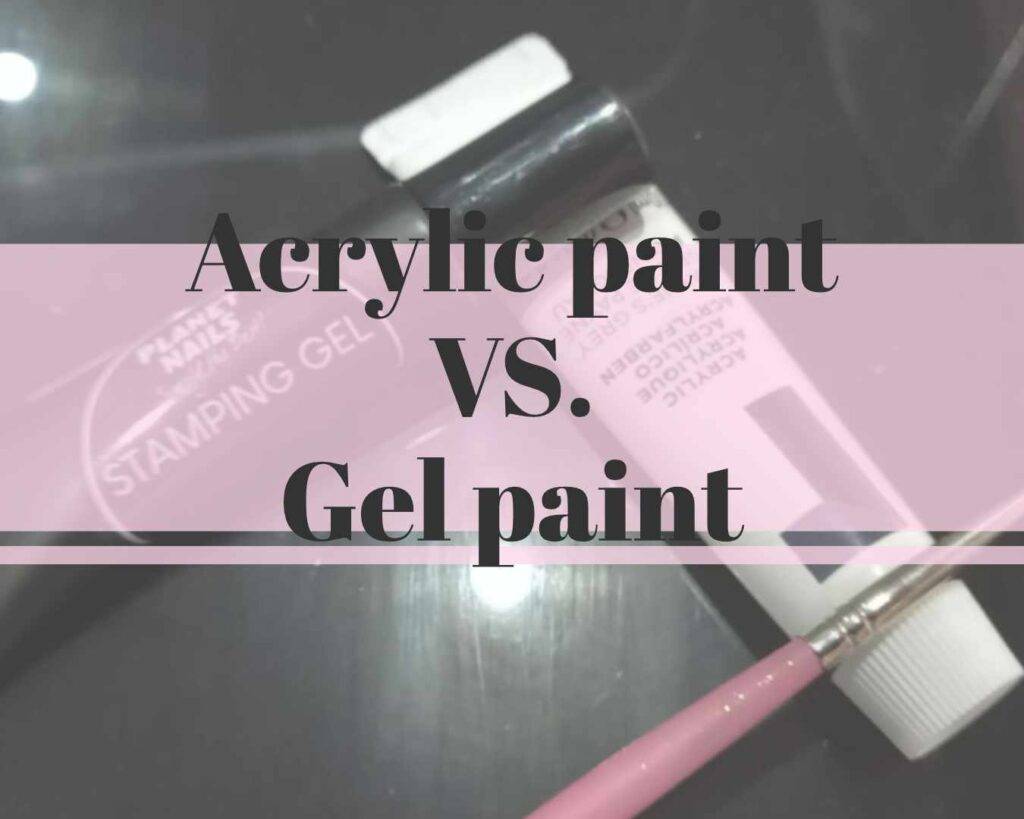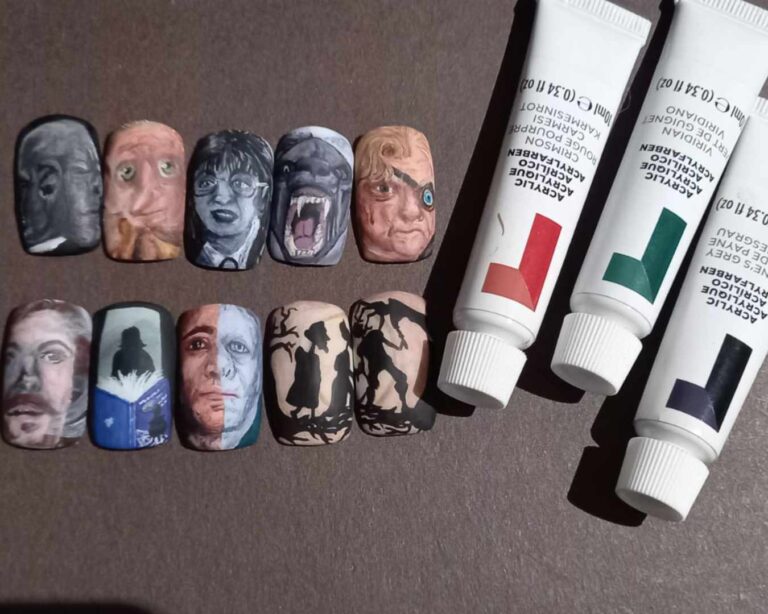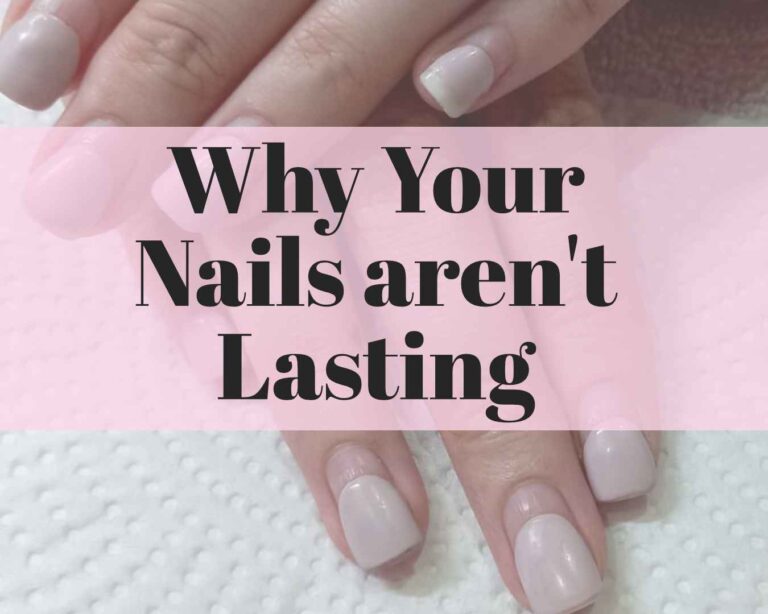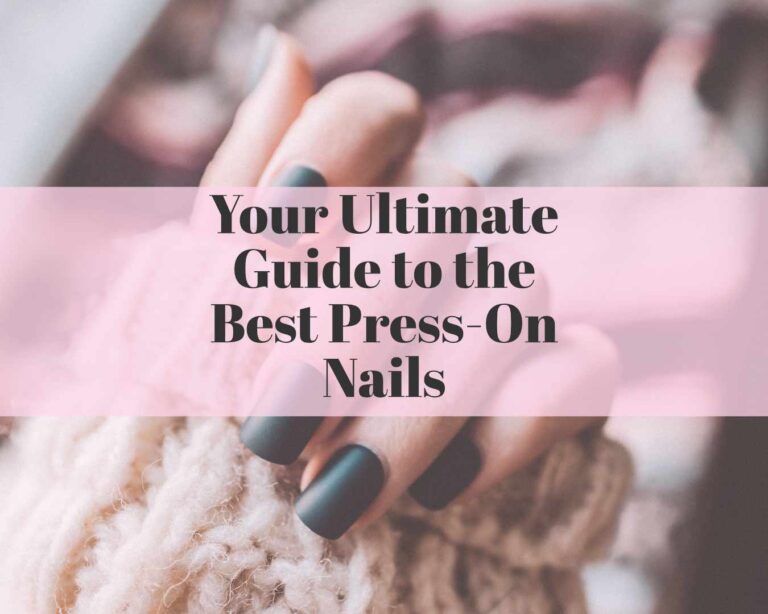

Tips for using acrylic paint VS. Gel paint
When you love hand-painted nail art as much as I do you must have come across two main ways of achieving a hand-painted look. You can either make use of gel paint or acrylic paint. Now before I started doing nails I had no idea that you can use certain watercolour and acrylic paints on nails.
If you want to know the key differences between the two and some tips that I have learned for using both, stick around and keep reading.
Acrylic paint VS. Gel paint
Acrylic paint:
- Thick consistency
- Air dries
- Water-soluble while wet
- Can create a 3D effect by leaving the paint to thoroughly dry for a couple of hours
- Can’t be cured in a UV/LED lamp
- Cost-effective
- Relatively easy to use
Gel paint:
- Easy to work with
- A little goes a long way
- Not water soluble
- Does not air dry (except in sunlight)
- Cost-effective
- Can’t create a 3D effect as the gel won’t cure properly
- Thin consistency
Gel paint
Gel paint has easily become the most common and go-to medium for hand-painted nail art. There are many different brands that you can make use of. They also come in different shapes and sizes. Generally, when choosing gel paint you want something that’s going to be easy to use and that’s going to give you the desired opacity and line flow. No one wants to fight against a medium. It only makes the job a lot harder than it needs to be.
I have used 2 types of gel paint so far, namely gel liner and stamping gel. Now gel liner was meant to be the only gel paint, and for a long time, I only made use of it to draw my art and do line work. But I recently tried out the stamping gel, which was designed for stamping plates to create an opaque and flawless design.
I prefer stamping gel as it works amazing. It is super opaque and a little goes a long way. I have also found that using gel liner can be quite tricky as it has a thick consistency, and as time passes the pigment tends to separate from the clear gel. Note that I have only used one brand thus far and it is up to you which brand you choose to give a chance.
Stamping gel comes in little tubes, whereas the gel liner that I use comes in small gel pots. Stamping gel has an almost paint-like consistency and is super easy to work with. It’s also very great for creating line art. The tubes almost look like acrylic paints and can be purchased from almost any nail products and equipment provider.
To prevent gel paint from drying out you can make use of a sealed paint palette. This will prevent debris from making its way into the gel and keep the gel out of sunlight. As gel does not air dry, this will protect the gel and will save you money as you won’t have to throw away leftover product after each use. Never store gel of any brand or type in direct or indirect sunlight. This will dry out your paint and it won’t be salvageable.
Gel paint is great as it doesn’t air dry so you can decide when you feel your design is ready to be cured. Similarly to acrylic paint, you can mix colours to achieve the desired look.
Note that gel polish is not the same as gel paint. What I usually do is use gel paint to draw outlines and do detailed work that needs to be opaque and clear. And then I use gel paint to colour in my design and create shading.
High-quality gel paint can be a bit on the costly side when you look at the size of the tube. But it will last you a super long time if you use it correctly. Less is always more when it comes to the gel application.
Acrylic paint
Acrylic paint is another medium that you can use to create amazing nail art. Most nail shops sell some type of brand of acrylic paint. It comes in tubes which are generally sold as a set or individually.
It’s relatively easy to work with and can create both thick 3D-type lines and 2D lines with ease. Here are some tips that I’ve learned when working with acrylic paint.
Sponges
Use a wet sponge! I don’t own a palette. When working with acrylic paint you will quickly learn that it dries very fast. Acrylic paint is also only water-soluble (which means it can be thinned out with water) while it’s wet. It will not reactivate when you wet it with water once it dries like watercolours. This means that you will have to throw away any dry paint.
Placing a wet sponge on a plate with a bit of water will allow the sponge to continually absorb water. You can then squeeze the paint on to the sponge. The moisture will keep the paint wet for hours. You can also periodically go over the paint by dropping some water on the top to prevent dry layers from forming on top of the paint.
Just note that when using a sponge, if you leave the paint for too long it will be absorbed into the sponge and will be almost as useless as if when it would’ve dried.
After you are done painting you can easily clean the sponge by rinsing it under the tap. This is very economically and one sponge can be used for a long time. There is however something I’ve noticed and that is that when the paint dries, sometimes when rinsing the sponge, a chink of the sponge will come off with the paint. But it’s not the end of the world.
Use water
As I mentioned before, Acrylic paint can be diluted with water when it’s wet. This allows you to create thinner paint that almost has a watercolour-like consistency. This also helps with the application as acrylic paint is generally very thick, and using it like that will use a lot of paint and isn’t very economic. It also makes mixing colours a lot easier.
Use a matte topcoat in-between paint layers
I would almost say that this is the most important thing to remember when working with acrylic paint. You need to work on a matt surface otherwise the paint will only peel off. What I find works great it to add a layer of matt topcoat to the nail before I start painting. This ensures a clean surface to paint on.
When painting you might work in layers, especially when you are working with a very detailed design. What I’ve found works wonders, is to paint a layer of matt topcoat over your “painting” and curing it before going to the next step. This way you will ensure that if you make a mistake, all of your work underneath won’t be erased with your mistake. Just make sure that the paint is completely dry before applying the matt topcoat, or you risk the paint peeling.
Use backing paper as a palette
You can find backing paper when using forms. It’s the shiny paper that forms are stuck to. The backing paper is not just great when creating 4D flowers, but also for painting. I use the shiny part of the paper to mix my colours. It’s not super absorbent and cleans easily by wiping it with alcohol once the paint dried. It’s also cost-effective and very economical as, instead of throwing the paper away after peeling off the forms, you’ve found another use for them.
Gel finishing wipe off solution makes a great paint remover
Gel finishing wipe-off solution or any alcohol-based nail-friendly cleaning solution is great for removing dried paint from your nail “canvas” and correcting errors. I will however not recommend using acetone for error correction as it can be especially corrosive.
If I ever made a mistake I simply add some gel finishing wipe off solution to my brush and gently wipe the area where I’ve made the mistake. It removes the paint quite easy. Just be careful to no remove something unintended.
Acrylic paint and gel paints are quite similar. One key difference however is that acrylic paint can take some time to dry whereas gel paint can simply be cured in a UV/LED lamp. This can be problematic in circumstances where the temperature is very cold on a rainy day for instance, as the paint will take longer to dry.
I hope that this article gave you a better idea of the two different mediums that you can use for nail art, and that you learned a new trick or two.














